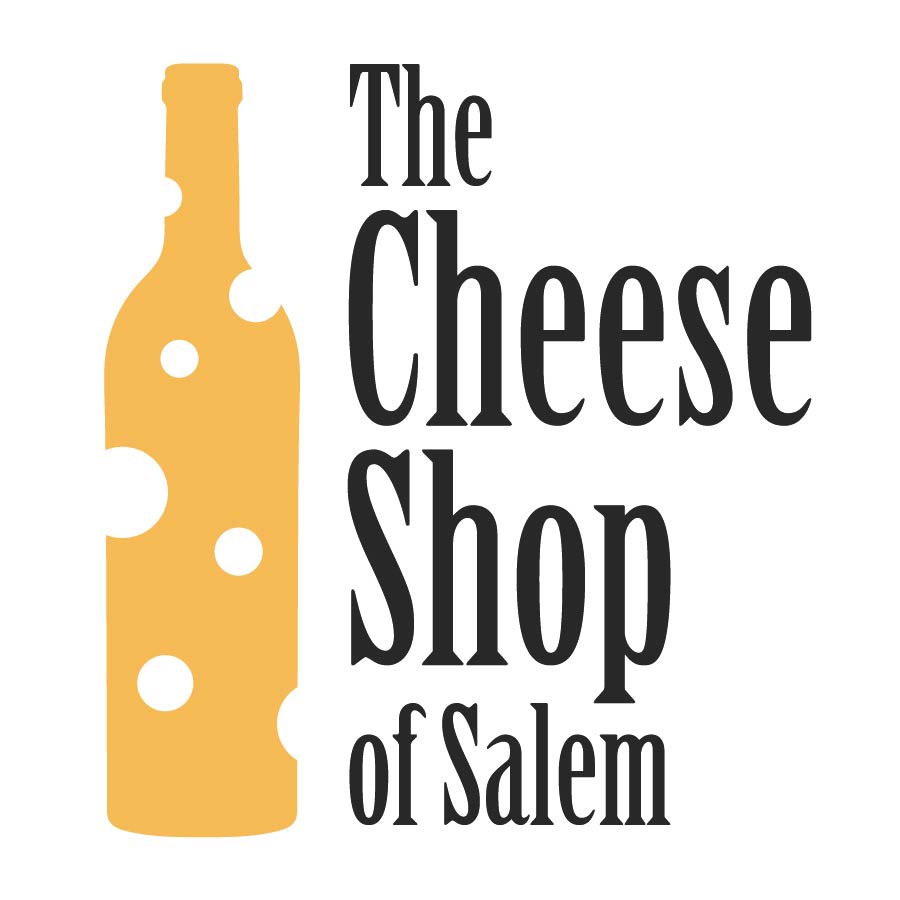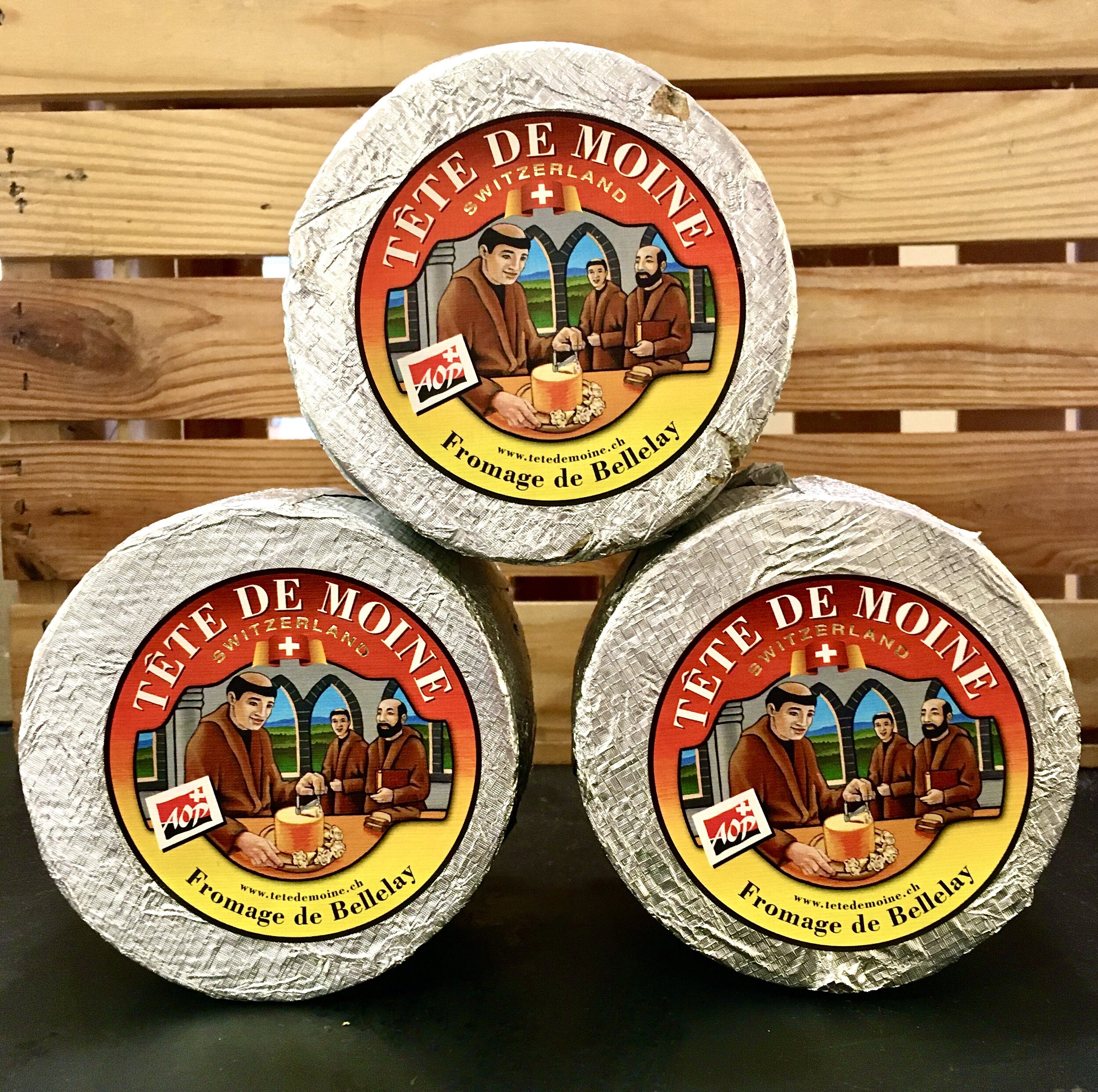Tête de Moine
It’s the Monk’s Head Cheese!
Last week, a customer came in looking for “monk’s cheese.” I didn’t know what he meant so we searched the case until he pointed at the label on the little wheel of the Swiss Tête de Moine. “There it is!” we exclaimed with joy at the fruitful end to our treasure hunt. Neither of us knew why he called it “monk’s head” except that the label includes three happy monks. If any of you speak French you’re probably yelling at your screen right now because know Tête de Moine literally translates to “monk’s head,” so duuuuh it’d be known as monk’s cheese!
Tête de Moine is one of Switzerland’s oldest cheeses invented in the 12thcentury, and as with all old things, this one has differing histories depending on who you ask. We can all agree it was invented at the Bellelay Abbey in the Swiss Jura, but the origin of the name is up for debate. According to some sources, the name had to do with the fact that to eat the cheese, one shaves down the top so it ends up looking the top of a monk’s shaved head. French soldiers might have bestowed the name during the French Revolution as a way to mock the monks, OR the monks gave it to the cheese themselves because they had a sense of humor. Another possibility is that the name is simply and homage to the holy men who created it. Or maybe it had to do with allocating a certain amount of cheese to each monk (head) in the monastery. So this is a choose your own adventure kind of situation.
Since the Bellelay monks had a reputation as excellent cheesemakers, bishops and royals hoarded all the Tête de Moine for themselves, until it eventually made its way into the lives of the normals as a snacking cheese that was thinly shaved with a knife off the top of the wheel. These delicate curls release the cheese’s aromas of fruit and grass and flavors of rich sour cream, hay and apricots. To make shaving Tête de Moine easier and prettier, Nicholas Crevoisier invented the girolle in 1982, and it is one of those devices that does only one thing and does it very well. It has a small metal post planted in the middle of a round wooden board with a shaver attached to the post. The cheese, with top rind sliced off, is pushed onto the post until the bottom of the cheese sits on the board. The attached shaver is then placed on top of the cheese and pulled around in a circle to create a tasty little fluff of cheese. The Tête de Moine curls are quite fun to create and REALLY fun to eat. But you don’t have to have a girolle to enjoy Tête de Moine. Rather you can just use a knife or a cheese slicer to shave off pieces, or say screw that, and just cut large chunks like any other cheese. I’m sure those talented monks wouldn’t have minded either way.
For the love of cheese and especially cheese with history,
Kiri
P.S. Below is a video of the girolle. It immediately makes me want to eat all my cheese in the shape of fine little flowers.


